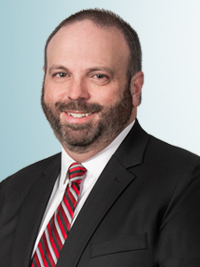By Charles Dean Smith, Jr., CPA
When SECURE 2.0 (Act) was enacted in late 2022, it introduced a number of provisions aimed at improving retirement security for Americans. However, the implementation of the new rules outlined in Section 603 of the Act caused confusion and concerns among high earners, employers, and lawmakers as they approached year-end implementation deadlines for their retirement accounts and plans
In a significant recent development on August 25, 2023, the IRS has decided to postpone the implementation of Section 603, also known as the Roth catch-up contribution requirement, until 2026. This decision offers a strategic planning opportunity for high-income earners (>$145,000) looking to optimize their retirement savings through December 31, 2025.
As per the recent IRS Notice 2023-62, individuals aged 50 and above will continue to have the ability to contribute an additional $7,500 into their 401(k) plans, on top of the $22,500 employee deferral limit for 2023. The deferral limit will increase to $23,000 for 2024 per a recent IRS announcement on November 1.
This delay of the new Roth catch-up contribution rule for high earners means that individuals will operate under the existing 401(k) plan rules until 2026.
Understanding SECURE 2.0 and Its Impact on Retirement Planning
Prior to the intervention of the IRS, SECURE 2.0 mandated Roth (post-tax) catch-up contributions for individuals earning over $145,000 annually. This rule was set to begin in 2024.
However, this represented a significant shift from the previous flexibility where individuals had a choice to participate in an employer-sponsored 401(k) plan, Roth 401 (k) account, or a combination of both, regardless of their age or income level.
The IRS noted that the transition from pre-tax contributions to required Roth treatment for high-earning individuals looking to make catch-up contributions required more time for employers and retirement plan administrators to implement these significant changes. That is the reason for the two-year administrative transition period; it offers extra time for planning, enabling individuals to thoroughly assess the distinct rules and advantages linked to 401(k) and Roth accounts. Here are the key distinctions between the two contribution and account options:
Read more here about the differences between pre-tax 401(k) and after-tax Roth contributions.
Timeline of Expected Changes
This timeline outlines the anticipated changes and their implications year by year.
By delaying the implementation of this section of SECURE 2.0, the IRS is granting individuals and employers more time to plan and make adjustments to existing retirement structures.
Catch-Up Contribution Trends
In the dynamic landscape of retirement savings, catch-up contributions are emerging as a pivotal aspect. A Vanguard report in 2022 revealed a positive trajectory in retirement plan participation rates. The embrace of automatic enrollment designs has bolstered this trend, empowering individuals to take charge of their financial futures. Notably, there’s a discernible shift in portfolio construction, with individuals opting for age-appropriate asset mixes and more balanced equity allocations.
However, what stands out is that only approximately 16 percent of eligible employees made use of catch-up contributions in 2022. This indicates an area of growth and untapped potential, urging a closer look at why more individuals aren’t leveraging this opportunity.
The Vanguard report strongly underlines the necessity for retirement plan participants to aim for a total savings rate of 12 to 15 percent or even higher to truly meet their retirement aspirations. On a positive note, around 20 percent of participants are within a one to three percent range of their target saving rate. This presents an encouraging prospect, suggesting that minor adjustments in savings behaviors could substantially impact their ability to achieve their retirement objectives.
In essence, as retirement planning continues to evolve, there is a clear call for increased awareness and understanding of catch-up contributions. Minor adjustments and proactive engagement with retirement planning can play a vital role in securing a comfortable retirement for individuals.
Further Guidance
With the extension of the catch-up contribution window, individuals—particularly higher earners—have a strategic opportunity to evaluate and plan their future contributions for 2024 and 2025 Given the anticipated future changes in individual income tax brackets, it’s crucial to strategize contributions and tax implications accordingly to optimize retirement savings. Striking the right balance will be key to navigating this significant transition successfully.
For specific inquiries about tax and retirement planning using catch-up retirement contributions and the potential impact of these retirement plan changes under the Secure 2.0 Act, clients can reach out to their PBMares tax advisor or Tax Partner Charles Dean Smith.





